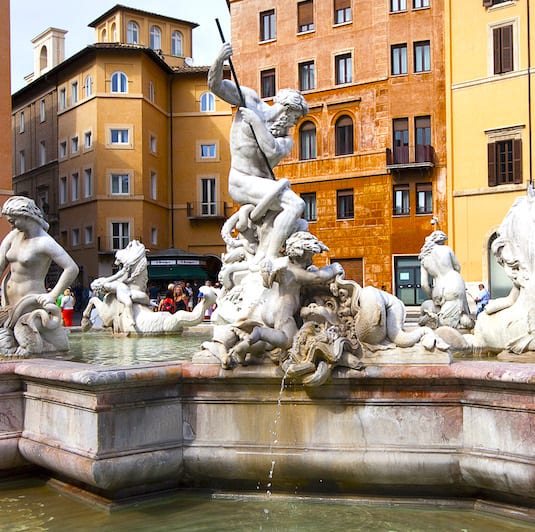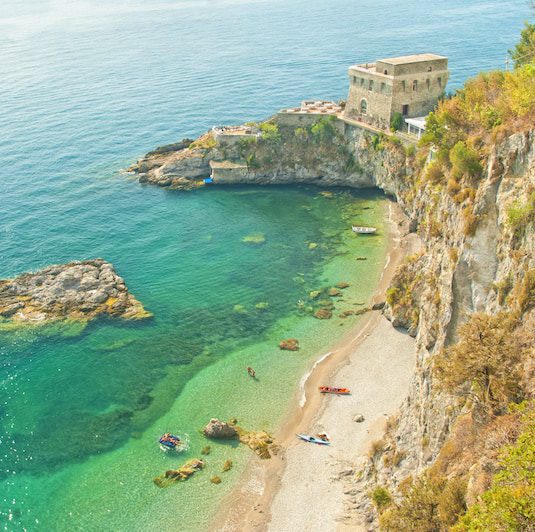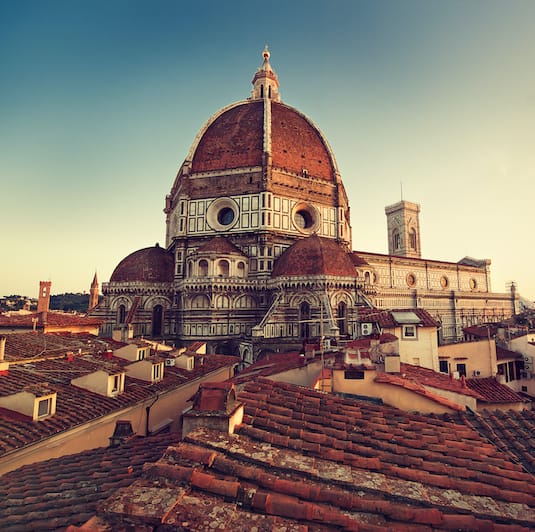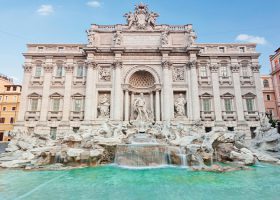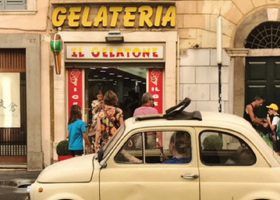Headed to the Vatican Museums and want to understand more about one of its most famous works of art? Discover the facts and history of Laocoön and His Sons from an official Rome tour guide and how the statue culminated in a centuries-long practical joke that Michelangelo played on the Roman art scene.
Pro Tip: Planning your visit to the Vatican in Rome? Bookmark this post in your browser so you can easily find it when you’re in the city. See our comprehensive guide to Vatican City for more planning resources, our top Vatican tours for a memorable trip, and how to visit the Vatican.
Facts and History of Laocoön and His Sons
At the time Laocoön and His Sons were discovered, Rome was gaining strength and started a project that would continue for over 500 years. And, as the story goes, the finishing touch on Laocoön and His Sons culminated in a centuries-long practical joke that Michelangelo played on the Roman art scene.
As an official tour guide in Rome, I’m pleased to explain the creation and importance of Laocoön and His Sons, one of the most famous works of art inside the Vatican Museums.
The Excavation and Michelangelo
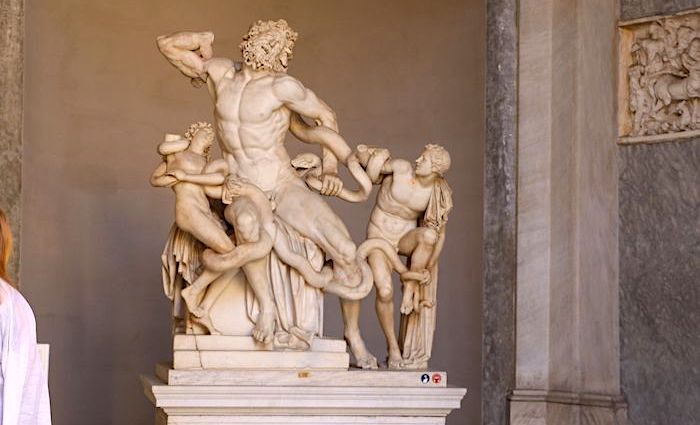
At the beginning of the 16th century, Rome saw a boom in the unearthing of ancient statues. There were so many statues in the ground 1,000 years after the fall of the Roman Empire, that ancient statue hunting became a huge business. This also spawned a counterfeit movement, which included Michelangelo.
At the beginning of Rome’s large excavation project, they pulled amazing sculptures out of the ground. When Laocoön and His Sons (also called the Laocoön Group) was unearthed in 1506, Michelangelo was one of the first people on the scene. You may remember Michelangelo for his work on the Sistine Chapel, the David, or maybe even La Pietà in St. Peter’s Basilica.
The complexity of Michelangelo’s artwork was largely due to his exposure to ancient Roman and Greek artwork like the Laocoön Group. Remember that back in the 1500s, there were no museums. So when an artist wanted to study artwork, he had to visit rich patrons who put their work on display. What better patron than the pope himself?
Michelangelo came into the world at the climax of the Renaissance, which meant that people were also discovering ancient statues all over the country. This gave him a huge advantage in his earlier years while studying.
All Rome was thrilled when excavators unearthed, near the Baths of Titus, a new and complex sculptural group. Julius II sent Giuliano da Sangallo to examine it, and Michelangelo went along. As soon as Giuliano saw the statue he cried out, “This is the Laocoön mentioned by Pliny.”
Will Durant, Historian
Popular Vatican Tours
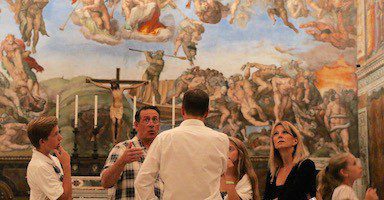
Best Selling Tour
Privileged Entrance Vatican Tour with Sistine Chapel
This our most popular and longest-running Vatican tour to date. It enters the Vatican City & Museums an hour before the public opening and visits the Sistine Chapel as it opens. Admissions are included and our English-speaking guides do a wonderful job bringing the museums to life! Admissions included.
See Prices
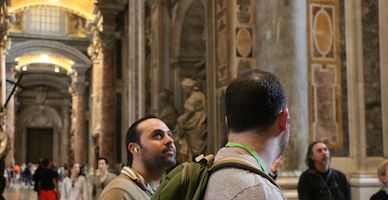
Best Price!
Skip the Line Vatican Tour with Sistine Chapel & St. Peter’s Basilica
One of our most popular Vatican tours since it is such an amazing value. Skip the line to get inside with a super-knowledgeable English-speaking guide that will bring the museum to life. Stories of the artists, popes, conspiracy, love, and of course tragedy! Admissions included.
See Prices
Not ready to book a tour? Check out our Vatican Guide for more resources.
The History and Style
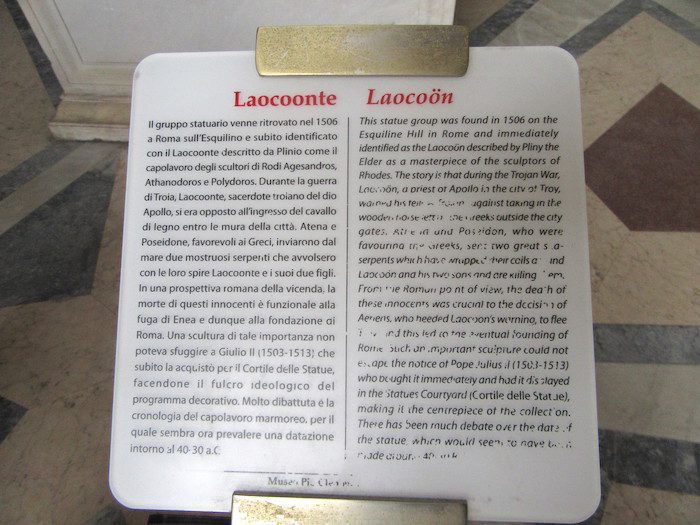
Pliny tells us that three sculptures from Rhodes created the Laocoön Group: Polydoros, Athanadoros, and Hagesandros. Laocoön was the name of the high priest of Troy who predicted the tragedy of the Trojan horse. The story varies depending on the poet, but Virgil’s version is very popular.
Apparently, Laocoön and his two sons were killed by snakes sent by Athena. They were attacked by snakes because they threw a spear at the Trojan horse in an attempt to foil the Greeks’ plan.
In other versions, Laocoön was forced to watch his two sons die and then live out his life alone with the painful memory. The sculpture is a sophisticated tangle of three people, Laocoön and his two sons, as well as the snakes. They twist and contort together, portraying a dramatic final scene that ends in death.
The artist’s major goal is to cast a shadow over the fact that the sculpture is a block of stone taken from a mountain. They want the onlooker to only see the story and dramatization. If the sculpture is misshapen in just one place, the entire Group would look unnatural to the viewer and the focus would shift from the story to the imperfections. Then, it falls like a house of cards.
To show human expression, the eyes are cut deeply, the mouth open, the face twisted, the hair disheveled. Deep drilling to make heavy shadows is somewhat akin to the use of make-up in the modern theater.
Nancy and Andrew Ramage, in Roman Artwork (4th edition)
Laocoön’s Famous Arm
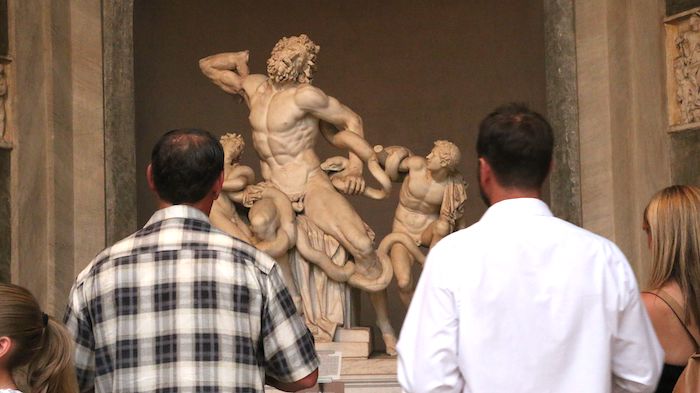
When the sculpture was excavated in 1506, Laocoön himself was missing his right arm. You could imagine Michelangelo raising his hand and yelling, “pick me, pick me” when an artist was being selected to design and attach a new arm.
A competition was held to determine who would design Laocoön’s missing arm. The question was how could they know what the arm looked like without having seen the original? Michelangelo submitted a version of the arm that bent backwards. Another artist, Jacopo Sansovino, won the contest, and they attached his arm to the sculpture.
The focus then shifted to this unnatural arm and destroyed the beauty of the statue. Michelangelo was so convinced he was correct that when he frescoed the Last Judgement, he portrayed Jesus Christ with his arm bent back over his shoulder in a sweeping motion, exactly like his version of the Laocoön arm.
Michelangelo’s Addition To Laocoön and His Sons
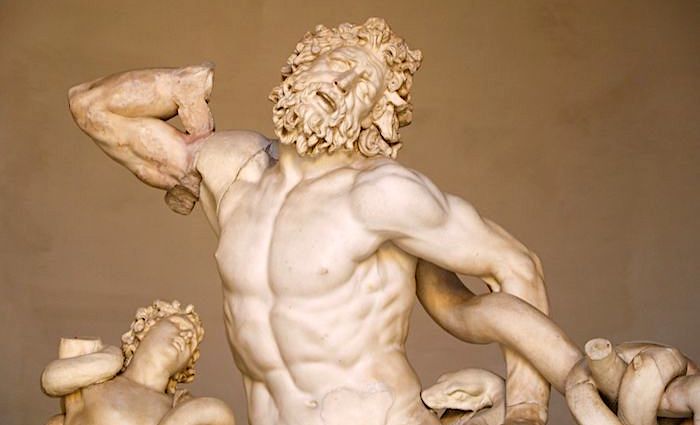
In 1906, archeologist Ludwig Pollock found a bent arm lying around in a builder’s yard and delivered it to the Vatican Museums. Fifty years later, they rediscovered it and attached it to the Laocoön Group.
It didn’t take long for people to notice the similarities between the arm in the Last Judgement and the new Laocoön arm, bringing Michelangelo’s practical joke full circle after 400 years of careful planning.
According to legend, Michelangelo’s original arm is still connected to the back of the statue. I have tried many times to peer around the statue to no avail. We must simply believe.
How To See Laocoön and His Sons
Laocoön and His Sons is on display in the Vatican’s Pio Clementino Museum along with a number of other important works of art. Check out the video below for nine other top areas to explore in the Vatican (the Pio Clementino Museum is featured at number six along with its must-see artworks).
One of the major benefits of joining a guided tour of the Vatican Museums is to learn about the historical context and stories of artworks like these—it makes an incredible experience even more memorable.
Not ready to book a tour? Check out our Vatican Guide for more info.
Here’s Where To Stay in Italy’s Most Popular Destinations
Rome, Florence, Venice, Amalfi Coast, and Capri


